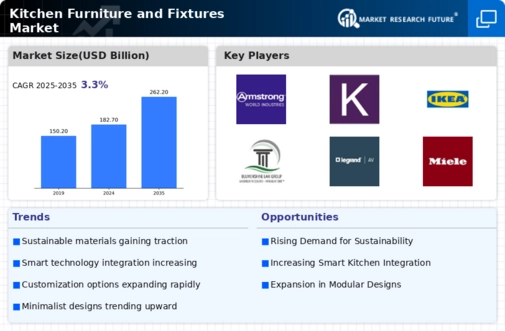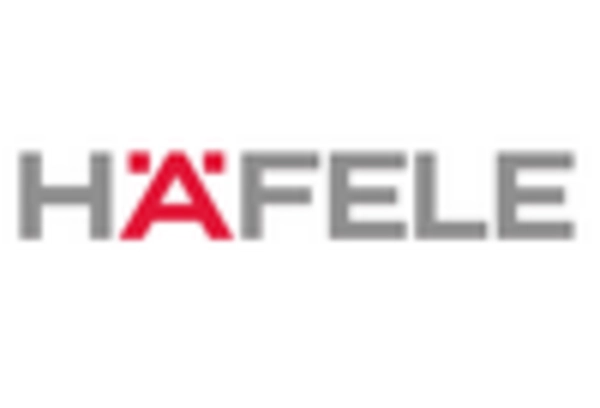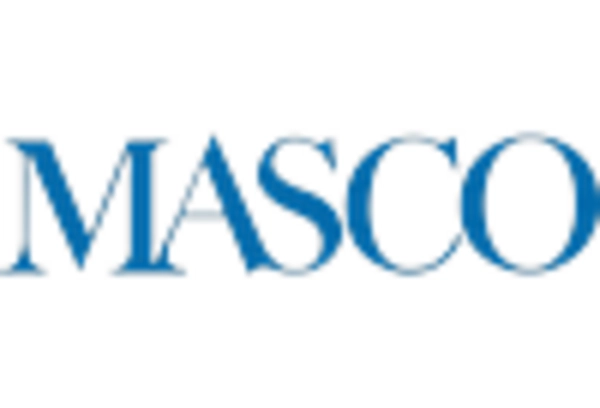The Kitchen Furniture and Fixtures Market is currently characterized by a dynamic competitive landscape, driven by innovation, sustainability, and digital transformation. Major players such as IKEA (SE), Ashley Furniture Industries (US), and Steelcase (US) are actively shaping the market through strategic initiatives that emphasize product differentiation and customer engagement. IKEA (SE) continues to leverage its global supply chain to offer affordable yet stylish solutions, while Ashley Furniture Industries (US) focuses on expanding its product range to cater to diverse consumer preferences. Steelcase (US), on the other hand, is concentrating on ergonomic designs and sustainable materials, reflecting a growing consumer demand for health-conscious and environmentally friendly options. Collectively, these strategies contribute to a moderately fragmented market where competition is fierce, yet opportunities for collaboration and innovation abound.
Key business tactics within the Kitchen Furniture and Fixtures Market include localizing manufacturing and optimizing supply chains to enhance efficiency and responsiveness to consumer needs. The market structure appears to be moderately fragmented, with several key players holding substantial market shares while also allowing room for smaller, niche companies to thrive. This competitive environment encourages innovation and responsiveness, as companies strive to differentiate themselves through unique offerings and superior customer service.
In August 2025, IKEA (SE) announced the launch of a new line of modular kitchen systems designed for urban living, which reflects a strategic pivot towards addressing the needs of space-constrained consumers. This initiative not only enhances IKEA's product portfolio but also aligns with the growing trend of urbanization, positioning the company to capture a larger share of the market. The modular approach allows for customization, appealing to a demographic increasingly focused on personalization in home design.
In September 2025, Ashley Furniture Industries (US) unveiled a partnership with a leading technology firm to integrate smart home features into its kitchen furniture offerings. This collaboration signifies a strategic move towards embracing the Internet of Things (IoT), potentially enhancing user experience and convenience. By incorporating technology into its products, Ashley Furniture aims to attract tech-savvy consumers and differentiate itself in a competitive market.
In October 2025, Steelcase (US) launched a new sustainability initiative aimed at reducing its carbon footprint by 50% over the next five years. This commitment to sustainability not only aligns with global environmental goals but also resonates with a growing consumer base that prioritizes eco-friendly products. Steelcase's proactive approach may enhance its brand reputation and customer loyalty, positioning it favorably against competitors who may not prioritize sustainability as strongly.
As of October 2025, the competitive trends within the Kitchen Furniture and Fixtures Market are increasingly defined by digitalization, sustainability, and the integration of artificial intelligence. Strategic alliances are becoming more prevalent, as companies recognize the value of collaboration in enhancing innovation and market reach. Looking ahead, it appears that competitive differentiation will increasingly hinge on technological advancements and sustainable practices, moving away from traditional price-based competition. Companies that can effectively leverage these trends are likely to secure a competitive edge in this evolving landscape.


















Leave a Comment